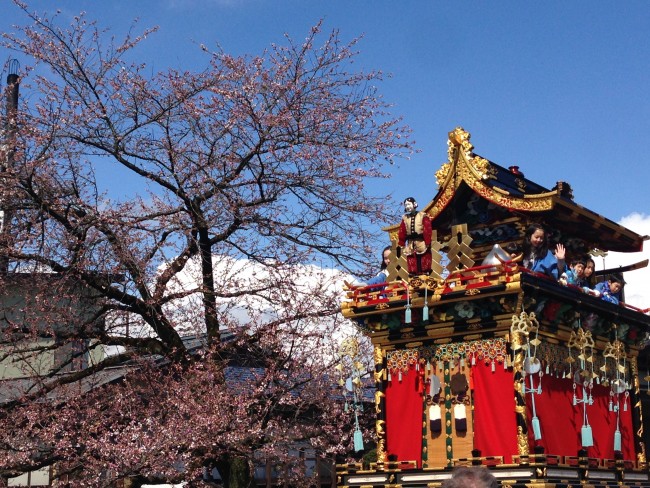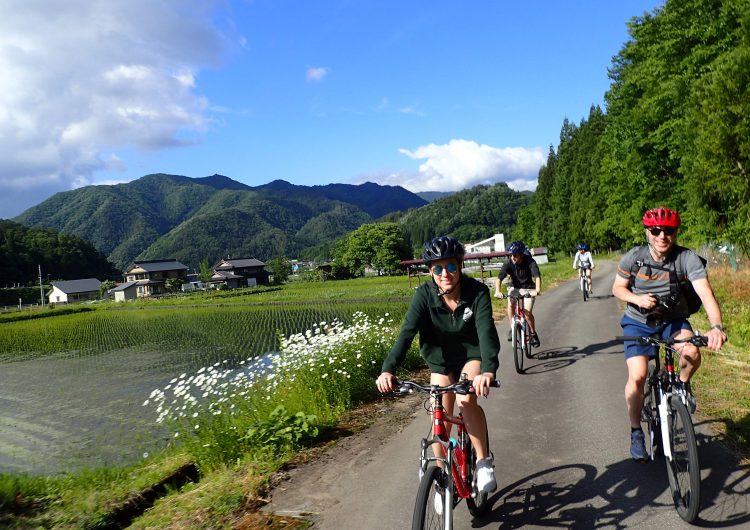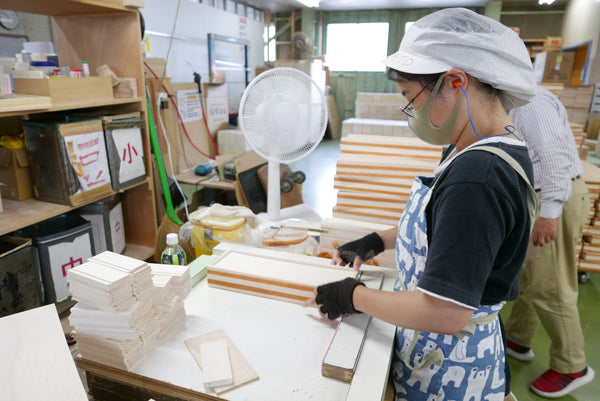autumnfestivalgifuhida furukawaJapanjinxjapanguidekoi fishmatsuriplaces to go in Gifupremium outletshirakawagoSpringtakayamatraditionstravelyagi
6 Things You Can Do in Gifu Prefecture Besides Shirakawa-go (Part 1/3)
 |
| Hida Furukawa Koi |
Hey there everyone! Today, I think Shirakawa-go has became very famous as a UNESCO world heritage spot as more and more are getting to know about JR Central's Takayama-Hokuriku Area Tourist Pass.
If you didn't know about Shirakawa-go, it's a place that looks absolutely magical during winter. See below! (Part 2 of the list is here; Part 3 is here!)
 |
| Snow-capped Gassho Houses in Shirakawa-go during Winter |
Of course, Shirakawa-go in Gifu prefecture is not the only place you should visit! Here are some of the places that I recommend visiting in the Gifu Prefecture.
So, where is Gifu? What does it offer?
 |
| Map of Gifu |
Gifu is in the central part of Japan, and is accessible via trains from Osaka/ Nagoya/ Toyama. Due to the central location, you could call it the heartland of Japan.
This prefecture has contributed a significant effort to when it comes to preserving their unique traditional cultures among the Japanese Alps and pristine rivers. Here, you can enjoy a variety of outdoor activities in each distinct season, as well as the traditional architectures, crafts and festivals.
Generally, Gifu is divided into two parts: Northern Gifu (Hida Area) and Southern Gifu (Mino Area).
 |
| Northern and Southern Gifu (Map from Matcha) |
Some Places/Things you can visit and do Northern Gifu are:
- Shirakawa-go, the UNESCO World Heritage Site
- Shinhotaka Ropeway and Onsen (Takayama City)
- Cycling in Hida City
- Checking out the old quarters of Hida Takayama
- Seeing Hida Shunkei Lacquerware
- Soaking in Hot Springs of Gero
Some Places/Things you can visit and do Southern Gifu are:
- Skiing in Gujo Ski Resort (Winter)
- Participate in Guji Odori Dance Festival (Summer)
- Experiencing Japanese Papermaking (Mino Washi Paper)
- Seeing Seki Swords
- Checking out Ukai (Cormorant Fishing)
- Buying a Masu (Wooden Measures/ Sake Cup)
- Checking out the Edo Period architectures in Magome-juku
- Checking out the Mino Yaki ceramic ware
Are you interested to know more about this area? Since so many are writing about Shirakawa-go and its winter light up, I'm not writing about it because my main focus is on other places that also deserve love from travelers. There'll also be 2~3 parts because it's quite a list!
1. Takayama Jinya
 |
| Takayama Jinya in Northern Gifu |
This place acts as a former governmental office during the Edo Period. This history in this place starts from the vast timber resources available back in the period, that has placed Takayama under Tokugawa Shogunate's control. It was a resource that is important for smithing (remember Seki swords?) for charcoals, as well as to build houses and ships.
Now, the building is currently open as a museum to public visitors, that includes nice tatami, beautifully drawn walls, zen art, and bunnies in the architecture.
Walking into the building you'll notice that the wave motif is frequently used on wall paintings, and also used as zen art on the outside (see image above).
One thing you will also notice is the different types of tatami: you will see patches of tatami that are of different color and start to think if they are made half-assed. The answer's "no" - Edo period is also a period where social ranking has became a huge matter - higher rank? Nicer tatami for you. The more green the tatami is, the higher social ranking the person was.
There are more points about this place that if you have the chance, it's highly recommended to hire a local guide! Japanese local guide here (Japanese only).
2. Takayama Festival
 |
| Takayama Spring Festival (Sanno Matsuri) |
The Takayama Festival is held in April and October on a yearly basis, and is said to be among the top 3 most beautiful Japanese festivals! This is also designated as an Intangible Cultural Heritage by UNESCO in 2016.
The reason why this festival is said to be one of the most beautiful festivals is that, you will see a lot of the extravagant workmanship of the traditional floats up close!
The Spring Festival, or called Sanno Matsuri, is held on April 14 and 15 yearly. It is a way to celebrate the coming of spring. The floats will parade around the Kamimachi area, on the south of Yasugawa Street.
Besides parade, there will also be the floats display. Generally they are from 9 in the morning until about 4.30PM. Three out of the floats (Sanbaso, Ryujin-tai and Shakkyo-tai) also has marionette performance! The marionettes moves in a very lively manner that you might think it's a live person and only performs twice a day for two days!
The night parade is also held on the first night. At night, you get to see lanterns, and the parade is done throughout the city slowly. Though if it starts to rain, the festival will be cancelled.
For the Autumn Festival, or called Hachiman Matsuri, is held on 9 or 10 of October yearly. This festival is a celebration of good harvest for autumn, and there will also be floats, marionette shows, and night parade!
3. Cycling and Learn the Local Lifestyles
 |
| Hida Satoyama Cycling |
If you have all the stamina and would love to look further than just tourist areas, how about considering tours offered from Satoyama Experience (not sponsored at all)?
Participating the Hida Satoyama Cycling tour will allow you to experience the inaka (countryside). You can also get an English-speaking guide that tells you a lot of the geography and history, and things observed in this area. The course of cycling is relatively easy and you get to talk to locals!
4. Furukawa Festival
 |
| Furukawa Matsuri (c)飛騨市 |
The Furukawa Festival announces the arrival of spring to the Hida region, and is one of the three largest Japanese festival of its kind. Participating this festival makes you feel the energy and the liveliness of the city, as you will see a crowd of bare-chested men parades as they play the large taiko drums (imagine the arcade machine drum Taiko no Tatsujin, but WAY bigger).
Also designated as an Intangible Cultural Heritage by UNESCO in 2016, it is annually held on April 19 and 20. It's a pretty unique festival, but since the group of men would shove around in order to hit the main taiko, it is also advised to view from a safe distance.
5. Getting a piece of the Artisan Woodcrafts
 |
| Production of Yagi |
Yagi is not just made for measuring cups, but also various other items such as boxes, little souvenirs, storage, and also for sake cups (yes, square sake cups)!
You can consider purchasing one as a souvenir! (You can read this catalog to have an idea on what can be done with wood). There are companies making this in Gifu, and since this region is also a place where wood holds a great significance, I can't think of a better souvenir besides this (omamori from shrines aside).
6. Shopping in Toki Premium Outlets
 |
| Toki Premium Outlet |
Worrying about losing your shopping spree if you spend more time in Gifu? Fret not! There's a premium outlet in Gifu prefecture itself, just 30 minutes from Tajimi Station by bus (access information here)!
Toki Premium Outlet is an area designed to look like Colorado of USA. If you're going there as a tourist, you get coupons that can save you heaps of yen!
Various brands such as Adidas, Birkenstock, Clarks, Disney Store, Edwin, Fossil, G-shock, Kate Spade... until Zwilling J.A. Henckles, you could almost say that they have stores from A to Z!
For more information, you can check their official site here.
As stamina depletes I'll be writing more on other days!
Here are some other things I'll be writing in the next post about Gifu:
Toki Premium Outlet is an area designed to look like Colorado of USA. If you're going there as a tourist, you get coupons that can save you heaps of yen!
Various brands such as Adidas, Birkenstock, Clarks, Disney Store, Edwin, Fossil, G-shock, Kate Spade... until Zwilling J.A. Henckles, you could almost say that they have stores from A to Z!
For more information, you can check their official site here.
As stamina depletes I'll be writing more on other days!
Here are some other things I'll be writing in the next post about Gifu:
7. Experiencing Shinhotaka Ropeway
8. Relaxing in Okuhida Hot Spring Villages
9. Experiencing Hot Spring in Gero... and more!
Gonna get some good rest. Until next time!
Update: Part 2 is here!
Part 3 is here!

0 comments